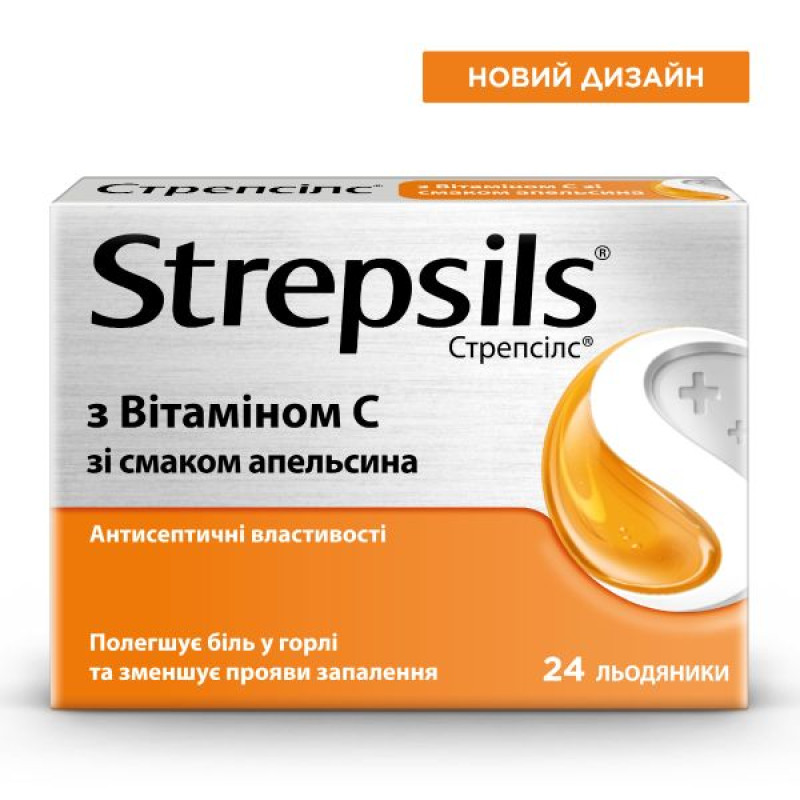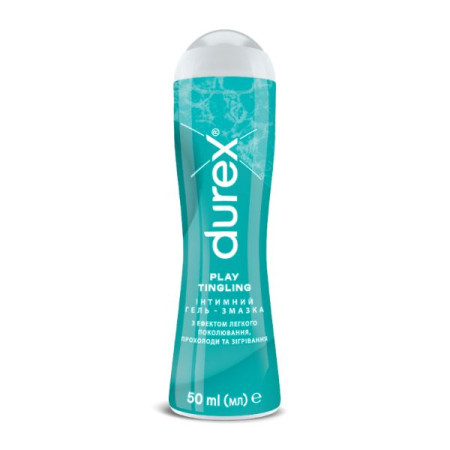Strepsils with vitamin C with orange flavor lollipops No. 24

Instructions for Strepsils with Vitamin C with Orange Flavor Lozenges No. 24
Composition
active ingredients: 2,4-dichlorobenzyl alcohol, amylmetacresol, sodium ascorbate, ascorbic acid;
1 lollipop contains: 2,4-dichlorobenzyl alcohol 1.2 mg; amylmetacresol 0.6 mg; sodium ascorbate 74.9 mg; ascorbic acid 33.5 mg;
excipients: levomenthol, orange flavoring, propylene glycol, sunset yellow FCF (E 110), Ponceau 4R dye (E 124), tartaric acid, sucrose solution, glucose solution.
Dosage form
Lollipops.
Main physicochemical properties: orange round lollipops with the image of the S sign on both sides.
Pharmacotherapeutic group
Drugs used in throat diseases. Antiseptics. ATX code R02A A20.
Pharmacological properties
Pharmacodynamics
The drug has antiseptic properties, is active against a wide range of gram-positive and gram-negative microorganisms; has an antifungal effect. The effectiveness of the drug is due to the presence of two broad-spectrum antibacterial components that relieve sore throat and reduce inflammation. Amylmetacresol destroys the structure of bacterial proteins, which provides a bactericidal effect. 2,4-dichlorobenzyl alcohol has a bacteriostatic effect by dehydrating the bacterial cell. Ascorbic acid compensates for the body's increasing need for vitamin C during infectious and inflammatory diseases.
Pharmacokinetics
Due to the low absorption into the blood, the drug belongs to the group of topical agents. Given this, pharmacokinetic parameters were not determined.
Indication
Symptomatic treatment of infectious and inflammatory diseases of the oral cavity and pharynx.
Contraindication
Hypersensitivity to any component of the drug.
Interaction with other medicinal products and other types of interactions
Interaction studies have not been conducted.
Application features
Do not exceed the recommended dose.
If symptoms persist for 3 days, you should consult a doctor for additional adjustment of the treatment regimen.
Patients with rare hereditary diseases accompanied by fructose intolerance, glucose-galactose malabsorption or sucrase-isomaltase insufficiency should not use this drug. Patients with diabetes should take into account that 1 lollipop contains 1 g of glucose and 1.4 g of sucrose.
Use with caution in patients with thrombosis, a tendency to thrombosis, thrombophlebitis, severe kidney disease, and urolithiasis, as the drug contains ascorbic acid.
The medicine contains sunset yellow FCF (E 110), Ponceau 4R (E 124), which may cause an allergic reaction.
Ability to influence reaction speed when driving vehicles or other mechanisms
The effect on the ability to drive vehicles or other mechanisms is absent or insignificant.
Use during pregnancy or breastfeeding
Pregnancy: The safety of this medicine during pregnancy or breast-feeding has not been fully established, but no risk is expected during these periods. However, as with all medicines, caution should be exercised during pregnancy or breast-feeding.
Breast-feeding: It is not known whether 2,4-dichlorobenzyl alcohol, amylmetacresol or their metabolites are excreted in human milk. A risk to the newborn/infants cannot be excluded.
There are no data on the effect on fertility.
Method of administration and doses
For oromucosal use.
Use the lowest effective dose necessary to relieve symptoms for the shortest period of time.
It is recommended for adults and children over 6 years of age to take 1 lollipop every 2-3 hours. The lollipop should be slowly sucked until completely dissolved. Do not use more than 12 lollipops in 24 hours. If symptoms do not improve or worsen within 3 days, consult a doctor.
No dose adjustment is necessary for elderly patients.
Children
Given the dosage form, the drug is contraindicated in children under 6 years of age.
Overdose
In the unlikely event of overdose, serious side effects are not expected. Some gastrointestinal discomfort may occur. Treatment is symptomatic.
Adverse reactions
The following adverse reactions have been observed with short-term use of amylmetacresol and 2,4-dichlorobenzyl alcohol. Other adverse reactions may occur with the treatment of chronic diseases and with long-term use.
Adverse reactions are classified by system organ class and frequency. The frequency is defined as follows: very common: ≥ 1/10; common: ≥ 1/100 and < 1/10; uncommon: ≥ 1/1,000 and < 1/100; rare: ≥ 1/10,000 and < 1/1,000; very rare: < 1/10,000; not known (cannot be estimated from the available data). Within each frequency grouping, adverse reactions are presented in order of decreasing seriousness.
On the part of the immune system
Uncommon: hypersensitivity reactions, urticaria.
Uncommon: pharyngeal oedema (swelling of the throat).
From the digestive tract
Uncommon: oral discomfort (burning sensation in the mouth), throat irritation (burning sensation in the throat), oral paraesthesia (tingling sensation in the mouth), oral oedema. Rare: glossodynia (tongue pain). Very rare: dyspepsia, nausea, stomatitis. Not known: abdominal pain.
Skin and subcutaneous tissue disorders
Not known: skin rash, itching, erythema.
Expiration date
3 years.
Do not use after the expiry date stated on the packaging.
Storage conditions
Store at a temperature not exceeding 25 °C.
Keep out of reach of children.
Packaging
12 lozenges in a blister; 2 blisters in a cardboard box.
Vacation category
Without a prescription.
Producer
Reckitt Benckiser Healthcare International Limited.
Location of the manufacturer and its business address
Nottingham site, Thane Road, Nottingham, NG90 2DB, United Kingdom.
There are no reviews for this product.
There are no reviews for this product, be the first to leave your review.
No questions about this product, be the first and ask your question.






















